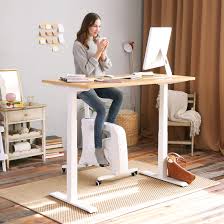
I described it as a “hitch in my get-a-long,” this limping ouch that seemed to be calling to me recently from my left hip. My friend Christine, who just returned from traversing much of the country while seated in a car, mentioned she was lying on the floor during our phone conversation this morning, “My body is not happy with me today. My back keeps going into spasm.” At noon, my husband took a break from his zoom screen to walk outside with the dog in the sunshine and gently stretch his stiff neck. He knows if he doesn’t tend to it along the way by night fall, he will not be, but he will have, a pain in his neck.
None of us are currently athletes or dancers in training, though we have been. From a former elite level of fitness–Rich as a long-distance bicyclist, Christine as a swimmer and marathon runner, and me as a dancer, we now have a deep appreciation for the important role a fit body plays in less physically challenging circumstances. As we age, we bump into the effects of past injuries, inherited physical anomalies, and repetitive improper posture over time. F.M Alexander, the Australian actor and founder of the Alexander Technique called this “misuse of our bodies” coming from what he called “efforting.” (Doing more than necessary to accomplish a task.)
We’ve all heard recently that sitting is as damaging to our health as smoking two packs of cigarettes a day. The research isn’t in yet on the health risks of long sessions on zoom, or continual interactions with our computers, iPads and phone screens. It is clear that health risks abound from our interactions with our devices. And they go way beyond damage to our eyes and eyesight.
The four types of fitness: Endurance, Strength, Flexibility and Balance still apply to those of us whose lifestyles are more sedentary. We just have to find ways to work movement and exercise into our daily schedules. I like the do-it-while-you’re -already-doing-something else method of maintaining fitness.
–I have a standing desk, in fact it’s flexible. It moves up and down, which means I can be flexible as well.
–Moving about in my kitchen as I make dinner I am reminded by the sign on the wall, “In this kitchen we dance,” and I practice yoga poses, balancing on one foot, and stretching while stirring the soup.
–Setting a timer for screen time is a great idea as are fit-bits and step counters that provide feedback as to how we’re doing getting movement into our daily lives.
– On-line, Christine and I include music and movement activities from InterPlay in the self-care classes we lead on zoom. We finish refreshed by our efforts and we hear from participants that they end feeling energized as well.
There is a fifth type of fitness that I don’t see included in the on-line lists of types of fitness when I google them. This may say a great deal about why we have the types of illnesses and ailments that we do in our country. (Hyper-tension, heart disease).
The missing fitness element is Relaxation. High level athletes and dancers know it well. It’s at the heart of what makes a dancer’s movement “graceful,” or how the runner, bicyclist, and golfer find the “zone,” for their peak performance. We find relaxation best when in the midst of our busy days we give ourselves the gift of some stillness. It’s well worth the effort because, besides lessening pain and discomfort, as another movement education expert Moshe Feldenkrais reminds us, “The quality of our lives is the quality of our movement.”

